


A Guide To Feline Wellness
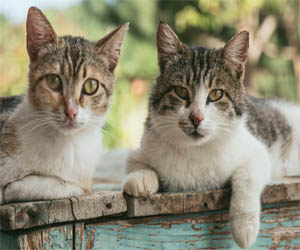
Cats, those enigmatic and graceful creatures, have a special place in our hearts. As responsible cat guardians, it's our duty to ensure their well-being and happiness. Nurturing your cat's health is a fundamental aspect of providing the best care for these beloved family members. Here's a guide to help you maintain your cat's well-being.
1. Proper Nutrition
Proper nutrition is the cornerstone of your cat's health. Cats have unique dietary requirements, so it's essential to provide high-quality cat food that meets their specific needs. Consult your veterinarian to determine the best diet for your cat based on factors such as age, activity level, and any existing health conditions.
2. Regular Veterinary Care
Routine veterinary care is essential to monitor and maintain your cat's health. Regular check-ups, vaccinations, and preventive care are vital for early detection of health issues and ensuring your cat receives the necessary treatments.
3. Preventive Care
Preventive care is key to a healthy cat. Discuss with your veterinarian the importance of vaccinations, flea and tick control, and heartworm prevention. Routine dental care is also crucial, as dental problems can lead to other health issues.
4. Grooming And Hygiene
Grooming and hygiene play a significant role in your cat's well-being. Regular brushing helps prevent matting, reduces shedding, and strengthens the bond between you and your feline companion. Some long-haired breeds may require more frequent grooming.
5. Hydration
Ensuring your cat stays well-hydrated is essential for their health. Cats can be picky about their water source, so provide fresh, clean water and consider using a cat water fountain if your cat prefers running water.
6. Mental And Physical Stimulation
Cats need both mental and physical stimulation to stay happy and healthy. Provide toys, scratching posts, and interactive playtime to keep your cat engaged and prevent boredom. This is particularly important for indoor cats.
7. Safe Environment
Creating a safe environment is crucial for your cat's health. Remove toxic plants, chemicals, and small objects that can be swallowed. Cats enjoy exploring, so offer window perches, scratching posts, and safe outdoor spaces when possible.
8. Emotional Well-Being
Cats also have emotional needs. Spend quality time with your cat, offering them affection and a sense of security. Cats thrive on routine and predictability, so provide a stable and loving environment.
9. Watch For Behavioral Changes
Keep a close eye on your cat's behavior, as it can be an early indicator of health issues. Any significant changes in behavior or appearance should be discussed with your veterinarian.
10. Patience And Love
Patience and love are the final components of nurturing your cat's health. Understand that cats have unique personalities and boundaries, and building a loving relationship with them is essential for their overall well-being.
Nurturing your cat's health is a multifaceted endeavor that includes proper nutrition, regular veterinary care, grooming, and attention to their emotional and environmental needs. By providing comprehensive care and celebrating the bond you share with your enigmatic and graceful feline friend, you can ensure their health and happiness for years to come. Cherish every moment with your cat and appreciate the joy they bring to your life.
Transforming Trash Into Valuable Resources
 2. Biomass-To-Biofuel Conversion
2. Biomass-To-Biofuel Conversion
Biomass, including wood, crop residues, and dedicated energy crops, can be converted into biofuels through various processes such as pyrolysis, gasification, and biochemical conversion. Pyrolysis involves heating biomass in the absence of oxygen to produce bio-oil, which can be further refined into transportation fuels. Gasification converts biomass into a synthesis gas that can be used to produce fuels like ethanol and synthetic diesel. Biochemical conversion uses enzymes and microorganisms to break down biomass into biofuels like ethanol and biodiesel.
3. Plastics-To-Fuel Technologies
Plastics, which are notoriously challenging to recycle, can be transformed into valuable fuels using pyrolysis and depolymerization methods. Pyrolysis breaks down plastics into liquid fuel, gas, and char, which can be used as fuel or chemical feedstocks. Depolymerization processes chemically break down plastics into their constituent monomers, which can then be used to produce new plastics or fuels.
4. Municipal Solid Waste-To-Energy (MSW-To-Energy)
Municipal solid waste (MSW) is a diverse mixture of materials, and waste-to-energy facilities can convert this waste into electricity and heat through incineration or gasification. Incineration burns the waste at high temperatures, producing heat that is used to generate electricity. Gasification converts MSW into a synthesis gas that can be used for electricity generation or further refined into transportation fuels.
5. Algae-Based Biofuel Production
Algae-based biofuel production is an emerging waste-to-fuel method that harnesses the rapid growth of algae. Algae can be cultivated in wastewater or on non-arable land, and they capture carbon dioxide during growth. This biomass can be processed to produce biofuels like biodiesel and biogas, providing an eco-friendly solution for waste management and clean energy generation.
Challenges And Considerations
While waste-to-fuel generation methods hold great promise, they are not without challenges. These include technical and economic barriers, ensuring sustainable feedstock supply, and addressing concerns about emissions and environmental impact. Careful planning, innovative technologies, and sound regulations are essential to maximize the benefits of these methods while mitigating potential drawbacks.
Understanding Cat Hunting Instincts
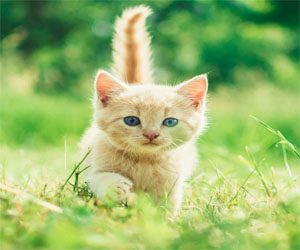 2. Instinctual Behaviors:
2. Instinctual Behaviors:
Cat hunting instincts are manifested through various behaviors:
Stalking: Cats often stalk their prey by crouching low and moving stealthily. This behavior can be observed when they watch birds through a window or engage in interactive play with toys.
Pouncing: The classic pounce is a vital hunting skill. Cats will leap onto their prey, displaying precise timing and agility.
Capture And Kill: After pouncing, cats use their sharp claws and teeth to catch and subdue their prey. While domestic cats don't necessarily intend to kill, they practice this behavior during play.
Playful Ambushes: Cats engage in playful ambushes with other pets or even unsuspecting humans. These antics serve as a form of practice for real hunting.
3. Benefits Of Hunting Instincts:
Hunting instincts offer several advantages for cats:
Mental Stimulation: Hunting behavior keeps a cat's mind sharp and active. It provides a sense of purpose and wards off boredom.
Exercise: Hunting-related activities, such as stalking and pouncing, provide physical exercise that contributes to a cat's overall well-being.
Bonding: Engaging in play that mimics hunting allows cats to bond with their owners and build trust.
4. Managing Hunting Instincts In Indoor Cats:
Indoor cats have fewer opportunities to satisfy their hunting instincts naturally. To ensure their well-being, consider the following:
 "The speeches of Lake Leman will become angered,
"The speeches of Lake Leman will become angered,
The days will drag out into weeks, then months,
Then years, then all will fail."
Interpreters have suggested that "Lake Leman" refers to Lake Geneva, a location that has played a significant role in the development of modern technology, particularly in the field of physics and computing. The reference to time dragging on, eventually leading to failure, is seen by some as a foreshadowing of the potential dangers of overreliance on technology and the concept of time dilation due to technological advances.
Quatrain 72 from Century 10 is also often cited in discussions about Nostradamus and technology:
"The year 1999, seventh month,
From the sky will come a great King of Terror:
To bring back to life the great King of the Mongols,
Before and after, Mars to reign by good luck."
While the interpretation of this quatrain is highly speculative, some have connected it to the Y2K computer bug scare that gripped the world as the year 1999 approached. The notion of a "great King of Terror" descending from the sky is symbolically linked to fears of technology failing or wreaking havoc, which is precisely what many feared would happen with computer systems at the turn of the millennium.
It's important to note that Nostradamus' quatrains are highly metaphorical, and their vagueness has allowed for a wide range of interpretations. Critics argue that retrofitting his prophecies to fit technological advancements is a product of selective reading and confirmation bias, as Nostradamus could not have had direct knowledge of modern technology and its complexities.


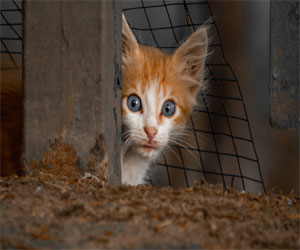



Unleashing Canine Athleticism And Bonding
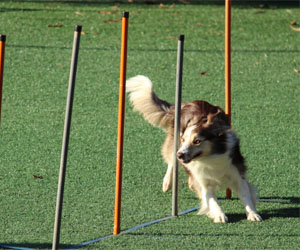 What Is Agility Training?
What Is Agility Training?
Agility training is a dog sport that involves navigating a timed obstacle course. These courses can vary in complexity but typically include jumps, tunnels, weave poles, A-frames, and seesaws. The dog's task is to complete the course as quickly as possible, following their handler's commands and without knocking down any obstacles. The sport is not just about speed; it also requires precision and teamwork between the dog and their owner.
Physical Exercise And Mental Stimulation: Agility courses provide dogs with an excellent physical workout. Running, jumping, climbing, and weaving through obstacles help maintain a dog's fitness and health. This is especially beneficial for high-energy breeds, as it allows them to expend their excess energy in a constructive way. In addition to physical exercise, agility training offers significant mental stimulation. Dogs must follow commands, make quick decisions, and memorize the course, which challenges their cognitive abilities.
Building A Strong Bond: One of the most remarkable aspects of agility training is the bond it creates between dogs and their owners. The sport requires clear communication, trust, and cooperation. Handlers use verbal commands and hand signals to guide their dogs through the course. This teamwork enhances the connection between the two, as they learn to anticipate each other's movements and work together harmoniously.
Boosting Confidence: Agility courses also boost a dog's confidence. As they master obstacles and successfully complete courses, dogs gain a sense of accomplishment. This newfound confidence often carries over into other aspects of their lives, making them more well-adjusted pets.
What Your Feline Friend Is Saying
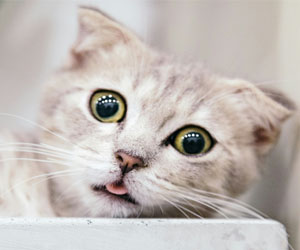 Meowing: Meowing is perhaps the most well-known cat vocalization. Cats may meow to greet you, ask for food, or seek attention. The tone and intensity of the meow can provide clues about their feelings.
Meowing: Meowing is perhaps the most well-known cat vocalization. Cats may meow to greet you, ask for food, or seek attention. The tone and intensity of the meow can provide clues about their feelings.
Purring: Purring is generally a sign of contentment, but cats may also purr when in pain or discomfort, as it can be a self-soothing mechanism.
Hissing And Growling: These vocalizations are defensive and signify fear or aggression. A cat hisses or growls when feeling threatened or cornered.
Chirping And Chattering: Some cats make chirping or chattering sounds when they observe birds or small prey animals outside. It's believed to be an expression of excitement or frustration.
2. Body Language:
Cats use their bodies to convey a multitude of messages:
Tail Position: The position of a cat's tail is a significant indicator of their mood. A high, straight tail often means they are happy or confident, while a puffed-up tail indicates fear or aggression.
Ears: The position of a cat's ears is essential. Forward-facing ears suggest interest, while flattened ears signal anger or distress.
Whiskers: When a cat's whiskers are relaxed and fanned out, it often signifies contentment. When they are pulled back tightly against the face, it may indicate fear or aggression.
Eye Contact: A slow blink from a cat is a sign of trust and affection. Prolonged direct eye contact, on the other hand, may be seen as a challenge or a threat.